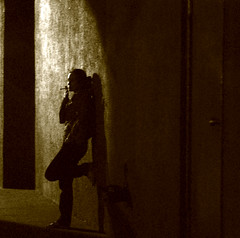Cable is a luxury. There are very few people out there who can actually and legitimately consider cable television to be a necessity of life. For the rest of us, it’s just something that’s nice to have. Unfortunately, it’s expensive. In my area, prices come as high as $90 plus tax, and that’s not including any of the fancy channels that could feed my True Blood addiction. If you start adding on channels, you can get up to $250 per month.
That’s a lot of cash.
Cutting back on cable TV is one of the easiest ways to get your spending under control. Here are 5 ways to make it happen.
1. Ditch it
Do you really need cable at all? How much of your life do you waste in front of the TV? This wouldn’t work well in my house. We enjoy too many shows, and a lack of TV aggravates my insomnia. When I wake up at 2AM, I need something mindless to distract me while I fall back asleep.
2. Netflix Instant
I love my Netflix. With Instant, as long as you aren’t too hooked on watching the latest show as it comes out, you can catch most of the show you enjoy. There are thousands of TV series to choose from. I make a habit of choosing a couple of shows at a time, and watching the entire series before moving on. This does have the drawback of leaving you a couple of seasons behind for some shows, like In Plain Sight. Grr.
3. Go basic
If you do need TV, do you need the extended cable-only channels? Can you get by with basic cable, and just get the shows that would be otherwise broadcast? That’s what we did. This, combined with #2, make TV cheap and easy.
4. All internet
Did you know that you can use a Roku box to get Netflix Instant, Hulu Plus, Crackle, and more? I have more channels available there than I’ve ever had on cable. Starting at $50, it’s a steal.
5. Drop the fancy channels
HBO, Skinimax, and Showtime are pure unnecessary luxuries. Save yourself some money and buy each series on DVD as they come out. If you buy one a month, you’ll still come out ahead.
I’m not about to tell you that cable is evil or that TV is rotting your brain. I enjoy my rot, and you should be able to do so, too. Try not to waste extra money doing it.
How do you save money on TV?








